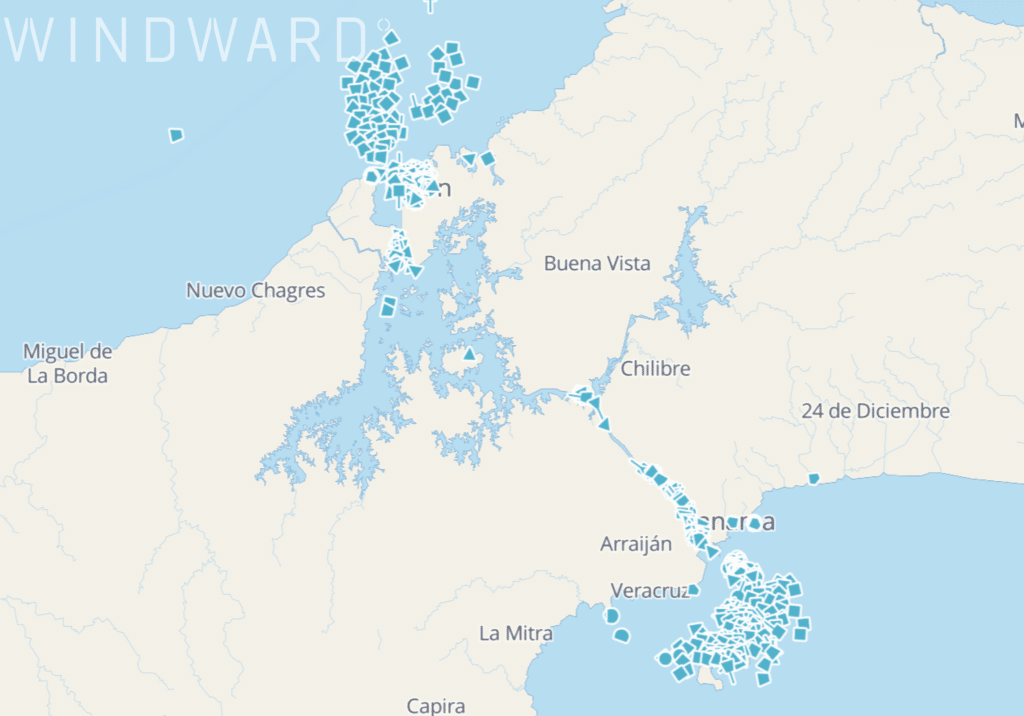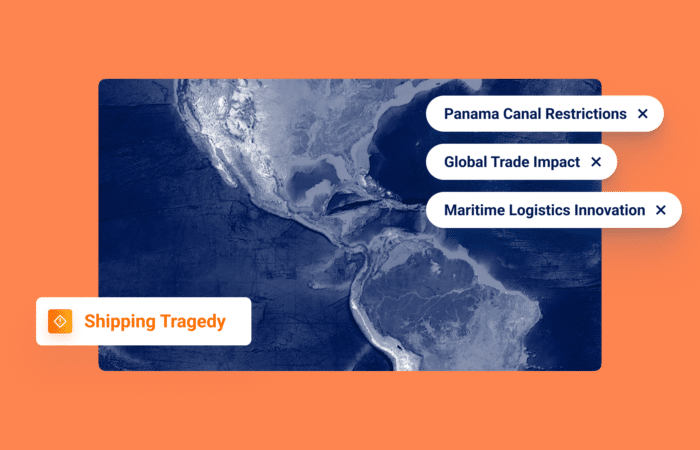What’s inside?
Last week, one of the world’s most essential waterways, the Panama Canal, imposed new restrictions on all vessels due to an ongoing drought. The Panama Canal Authority (PCA) has set limits on the daily passage of vessels through the Panama Canal, allowing only 32 vessels to enter per day. 10 vessels in the newer Neopanamax locks (which can accommodate larger vessels), and 22 in the older Panamax locks.
Additionally, the PCA reduced the maximum draft by 6.56 feet. Meaning, each vessel should be 40% lighter. These measures are a response to a historically low rainy season in July, which also ranks as one of the hottest on record, underscoring the intensifying effects of climate change on global trade routes.
As explained by CNBC, “The Panama Canal is a critical trade link for U.S. shippers heading to Gulf and East Coast ports. The U.S. is the largest user of the Panama Canal, with total U.S. commodity export and import containers representing about 73% of Panama Canal traffic. Forty percent of all U.S. container traffic travels through the canal every year, about $270 billion in cargo.”
This is what has happened since the restrictions were implemented…
More Vessels are Getting Delayed
Currently, according to CNBC, 154 commercial vessels are queued up for passage through the Panama Canal, facing an average delay of 21 days. The PCA has also limited the number of vessels that can pre-schedule their journey through the Panamax locks.
For perspective, during Panama’s rainy season, an average of 35 to 36 ships usually navigate the Panama Canal daily. This indicates that in August, there was a drop, with approximately 109 fewer vessels being permitted to transit compared to prior years, and with the new draft restriction in place, each ship will be allowed to transport fewer containers.

The Vessel that had to Unload 10% of its Containers
Last week, the ‘Ever Max,’ a container ship originating from Singapore, approached the canal with a little less than 14,900 containers, bound for Georgia, U.S. This mammoth of a vessel – the largest to ever attempt the crossing – exceeded the new canal capacity restrictions set at 13,345 TEU.
Consequently, the ship had to offload 1,400 containers at the Port of Balboa prior to making the crossing. This move, as highlighted by Windward’s platform, enabled the Ever Max to “slim down,” complying with the PCA’s revised draft restrictions. Those 1,400 containers weren’t lost. Instead, they were transferred to another vessel on the Atlantic side, with a huge delay, after paying $1.5 million in tolls. After this fiasco, according to Safety4Sea, “the Panama Canal could see a $200 million dip in earnings in 2024.”

Sectors are Already Diverting From the Canal
The energy sector is already feeling the impact of the canal’s delays. Clean tankers, transporting refined petroleum products, are now bypassing the canal in favor of routes to the Atlantic Basin.
Meanwhile, Cheniere Energy has chosen to bypass the Panama Canal for LNG shipments due to extended wait times. This is significant as the canal is the primary passage for LNG shipments to Asia. Additionally, coal traffic, especially U.S. coal exports to major importer India, is adjusting its routes because of these delays.
Harnessing Advanced AI: Proactive Solutions for Maritime Challenges
Under the new restrictions, navigating the Panama Canal has become notably challenging for carriers, logistics managers, and cargo owners. Due to unpredictable circumstances, stakeholders have no other choice but to adapt to these changing conditions.
In these tumultuous times, Windward’s Maritime AI™ platform can become an invaluable tool, when it comes to managing by exception. As mentioned in our previous blog post, “Exception management is key for effectively handling unforeseen events and receiving customized ocean alerts to assist in maintaining supply chain efficiency, customer satisfaction, and cost-effectiveness… enabling businesses to proactively identify and address these anomalies in the ocean logistics process. They can’t be fully prevented, but can only be managed to prevent or reduce their impact on supply chains, allowing you to focus on the tasks that really matter.”
Windward also provides detailed reasons for delays, real-time predicted ETAs and insights on non-feasible paths and insufficient routes. This can help empower decision-makers to proactively navigate these ever-changing events in the maritime industry.














